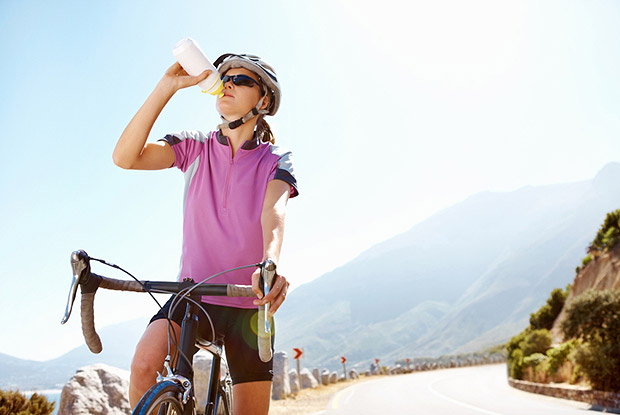
When the temperature rises, it is important to adjust your routine in order to stay safe while exercising. Simple changes in how much you drink and what you wear can dramatically reduce your chances of heat stroke and other heat-related dangers.
Wear the right clothing.
Your clothing influences how well your body can cool itself during exercise. Moisture-wicking fabrics draw the sweat from your skin and allow airflow to cool you. Avoid heavy cotton fabrics, which prevent airflow and can become heavy and uncomfortable once soaked with sweat. Workout clothing made with moisture-wicking fabric is widely available and affordable. In hot weather, shirts, shorts, socks, and hats that keep you cool are worth the small investment.
Drink before, during, and after.
The American College of Sports Medicine (ACSM) emphasizes that hydration needs are dependent upon the individual, the exercise, and the environment. Therefore, general guidelines are suggested, but these should be adjusted according to individual needs.
- Begin your exercise hydrated. You can pre-hydrate several hours before your activity.
- The best indicator of dehydration is body weight. Weigh yourself before and after your exercise session.
- During exercise, aim to drink approximately 0.4 to 0.8 liters per hour. Smaller individuals may need less, while larger individuals may need more.
- After exercise, drink about 1.5 liters per each kilogram of body weight lost during your workout.
As we sweat, we not only lose water, we also lose electrolytes, which regulate the hydration of the body and are critical to muscle and nerve functioning. For activities lasting longer than an hour, the ACSM recommends drinking 1.5 - 4 cups of a carbohydrate-based sports drink in order to replenish the lost electrolytes. Greater amounts may be necessary after heavy sweat loss. Sports drinks with 6 to 8 % carbohydrates are the most effective. Brands such as Gatorade fit these criteria.
Know when you are hydrated.
It’s important to drink only the amount needed to replace sweat loss. This is why assessing your hydration status by weighing yourself is the best method. Overdrinking can cause a dangerous condition called hyponatremia, or low sodium. The ACSM states that while dehydration is more common, hyponatremia caused by overdrinking is more dangerous.
Protect your skin.
The American Cancer Society recommends using sunscreen and lip balm with an SPF of 15 or higher. Reapply every two hours, or after swimming, sweating, or drying off with a towel. A hat will protect your scalp from the sun. Choose sunglasses with 99% to 100% UVA and UVB protection. You can also purchase clothing made from material with sun protection, labeled as UPF.
Heed the weather warnings and good advice.
It is best to save your outdoor activity for early morning or late evening. Avoid exercising from 10:00 am to 4:00 pm. This time of day is not only the hottest, but also when the sun’s rays are the most intense. Before you head out, check local weather reports for heat and humidity advisories. You should also check the UV index (a measure of the strength of solar UV radiation). Take weather warnings seriously, and keep your workout indoors when it is too hot to exercise safely outside. If you do head out, have a plan. Carry a cell phone, and know the danger signs of overheating and dehydration so that you can stop, seek shade, and call for help if you push too hard.



 5 Ways to Burn 300 Calories this Weekend
5 Ways to Burn 300 Calories this Weekend
 The Best Home and Garden Chores for Burning Calories
The Best Home and Garden Chores for Burning Calories
 5 Tips for Making Exercise a Habit
5 Tips for Making Exercise a Habit
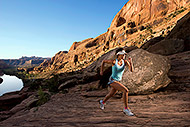 11 Tips for Exercise Motivation
11 Tips for Exercise Motivation
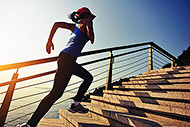 Signs You Need to Increase Exercise Intensity
Signs You Need to Increase Exercise Intensity
 Mistakes to Avoid When Setting Fitness Goals
Mistakes to Avoid When Setting Fitness Goals
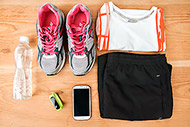 Essential Gear for Starting an Exercise Program
Essential Gear for Starting an Exercise Program
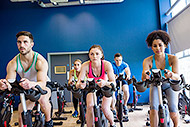 Burn Calories in 10 Minutes
Burn Calories in 10 Minutes

 Pinterest
Pinterest RSS Feed
RSS Feed